Md. Kamruzzaman Sarker
Rule-based OWL Modeling with ROWLTab Protege Plugin
Aug 30, 2018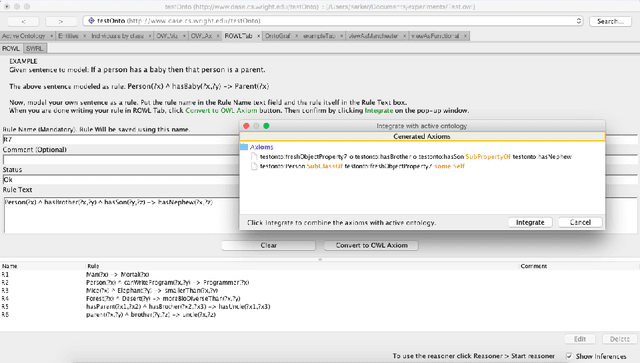
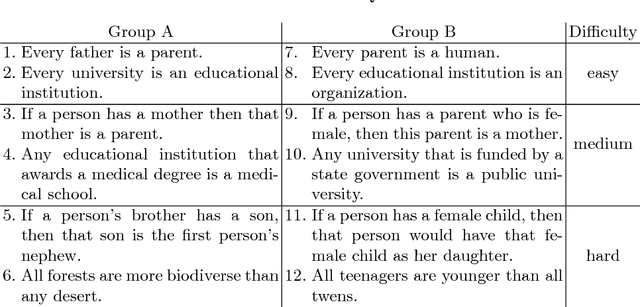

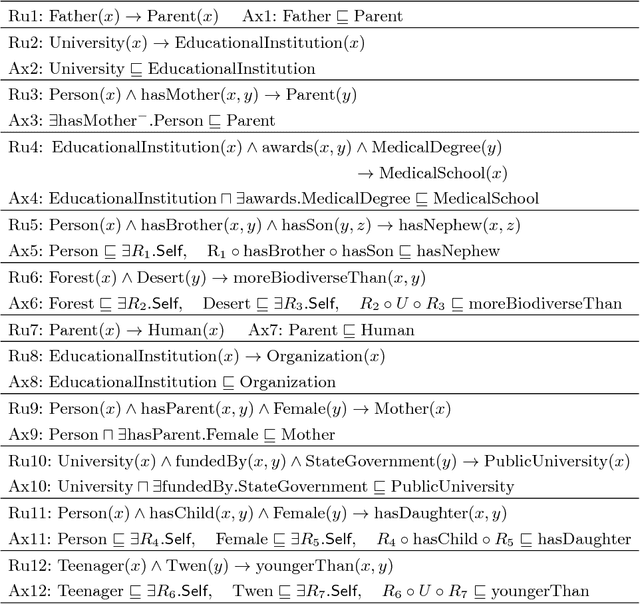
Abstract:It has been argued that it is much easier to convey logical statements using rules rather than OWL (or description logic (DL)) axioms. Based on recent theoretical developments on transformations between rules and DLs, we have developed ROWLTab, a Protege plugin that allows users to enter OWL axioms by way of rules; the plugin then automatically converts these rules into OWL 2 DL axioms if possible, and prompts the user in case such a conversion is not possible without weakening the semantics of the rule. In this paper, we present ROWLTab, together with a user evaluation of its effectiveness compared to entering axioms using the standard Protege interface. Our evaluation shows that modeling with ROWLTab is much quicker than the standard interface, while at the same time, also less prone to errors for hard modeling tasks.
* Accepted at ESWC 2017
OWLAx: A Protege Plugin to Support Ontology Axiomatization through Diagramming
Aug 30, 2018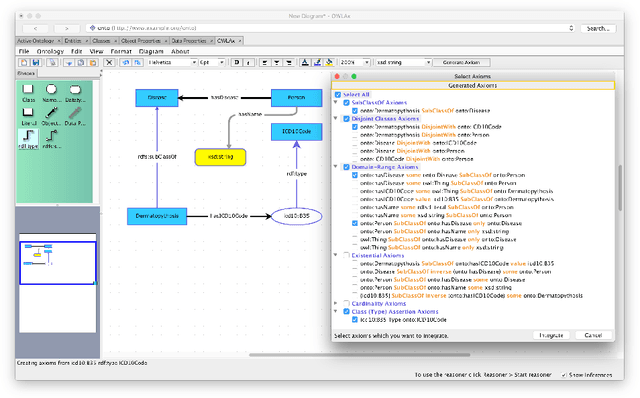
Abstract:Once the conceptual overview, in terms of a somewhat informal class diagram, has been designed in the course of engineering an ontology, the process of adding many of the appropriate logical axioms is mostly a routine task. We provide a Protege plugin which supports this task, together with a visual user interface, based on established methods for ontology design pattern modeling.
* Poster in ISWC 2016
Modeling OWL with Rules: The ROWL Protege Plugin
Aug 30, 2018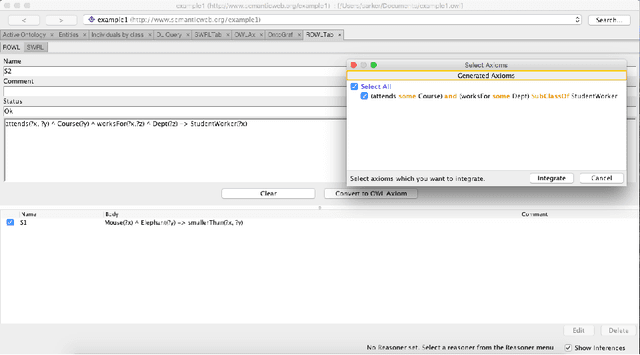
Abstract:In our experience, some ontology users find it much easier to convey logical statements using rules rather than OWL (or description logic) axioms. Based on recent theoretical developments on transformations between rules and description logics, we develop ROWL, a Protege plugin that allows users to enter OWL axioms by way of rules; the plugin then automatically converts these rules into OWL DL axioms if possible, and prompts the user in case such a conversion is not possible without weakening the semantics of the rule.
* Accepted at ISWC 2016
Emotion Recognition from Speech based on Relevant Feature and Majority Voting
Jul 11, 2018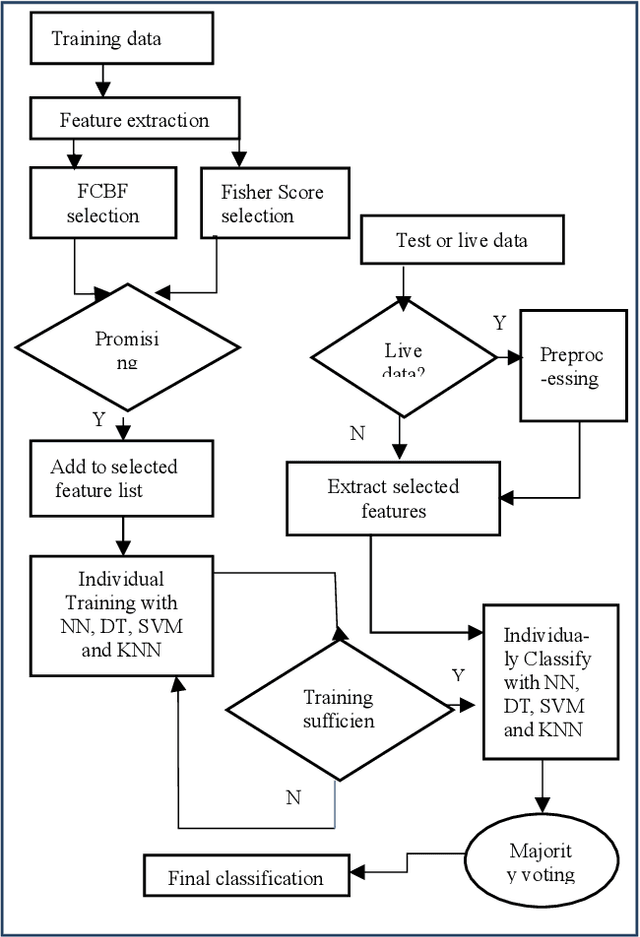
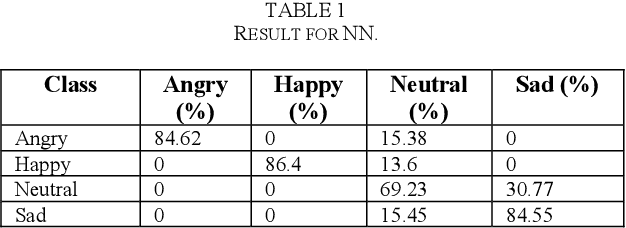
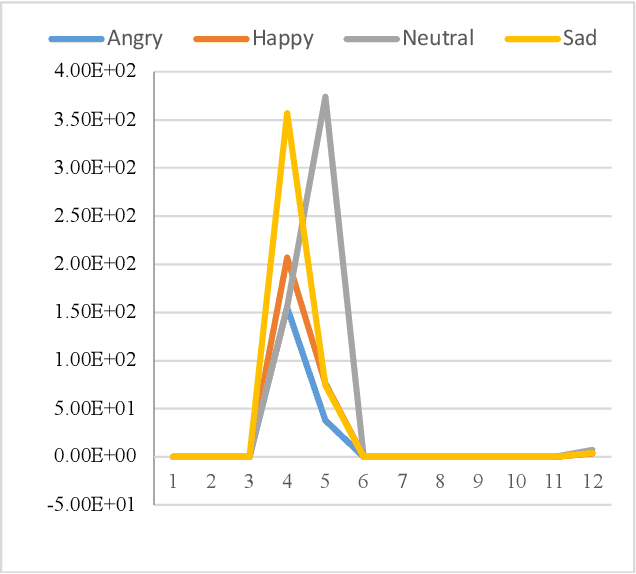
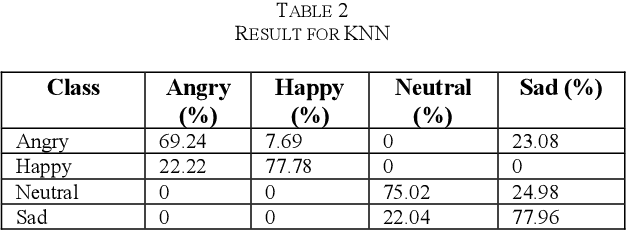
Abstract:This paper proposes an approach to detect emotion from human speech employing majority voting technique over several machine learning techniques. The contribution of this work is in two folds: firstly it selects those features of speech which is most promising for classification and secondly it uses the majority voting technique that selects the exact class of emotion. Here, majority voting technique has been applied over Neural Network (NN), Decision Tree (DT), Support Vector Machine (SVM) and K-Nearest Neighbor (KNN). Input vector of NN, DT, SVM and KNN consists of various acoustic and prosodic features like Pitch, Mel-Frequency Cepstral coefficients etc. From speech signal many feature have been extracted and only promising features have been selected. To consider a feature as promising, Fast Correlation based feature selection (FCBF) and Fisher score algorithms have been used and only those features are selected which are highly ranked by both of them. The proposed approach has been tested on Berlin dataset of emotional speech [3] and Electromagnetic Articulography (EMA) dataset [4]. The experimental result shows that majority voting technique attains better accuracy over individual machine learning techniques. The employment of the proposed approach can effectively recognize the emotion of human beings in case of social robot, intelligent chat client, call-center of a company etc.
 Add to Chrome
Add to Chrome Add to Firefox
Add to Firefox Add to Edge
Add to Edge